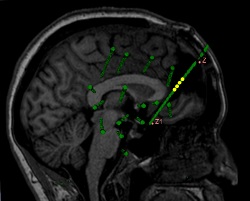Early motor cortex development
A critical stage of development involves sensorimotor integration, where the motor and somatosensory systems help support body movement and coordination. The early stages in this process involve the occurrence of spontaneous movements. Scientists worked on understanding the role of spontaneous movements and other sensory feedback in early motor cortex development under the aegis of the MOTOR_DEV (Sensory feedback in the development of motor cortex: underlying physiological network mechanisms and its relation to epileptic discharges) project. To realise this, in addition to modelling, they needed to record electrophysiological activity in neonatal rats as well as translaminar spinal cord neurons. During the initial stages of the project, researchers successfully developed methods to perform electrophysiological recordings in rats as well as spinal cord neurons. They also modelled electroclinical uncoupling in neonatal rats to obtain insight into epileptic seizures. Experiments revealed that sensory feedback is critical for sensorimotor integration. Researchers observed sensorimotor uncoupling in cases with deafferentation and isolated spinal cords. Results indicate that sensory feedback from spontaneous movements are important for activity coordination in the developing sensorimotor spinal cord circuits. Researchers studied the effect of spontaneous movements on spindle-burst activity in the primary motor cortex (M1). Moreover, they induced epilepsy-like conditions through the local delivery of bicuculline to study the impact of sensory feedback on activity-dependent formation of cortical sensorimotor circuits. Simultaneous recordings of M1 activity and motor behaviour in neonatal rats during the post-natal period provided new insight. For instance, they discovered that epileptiform discharges in M1 are mostly infraclinical during the neonatal stage. Also, M1 activity is mainly driven by spontaneous movements such as twitching during these early stages of life. Project activities have high clinical relevance as future research could focus on elucidating and resolving brain developmental disorders such as neonatal epilepsy.







